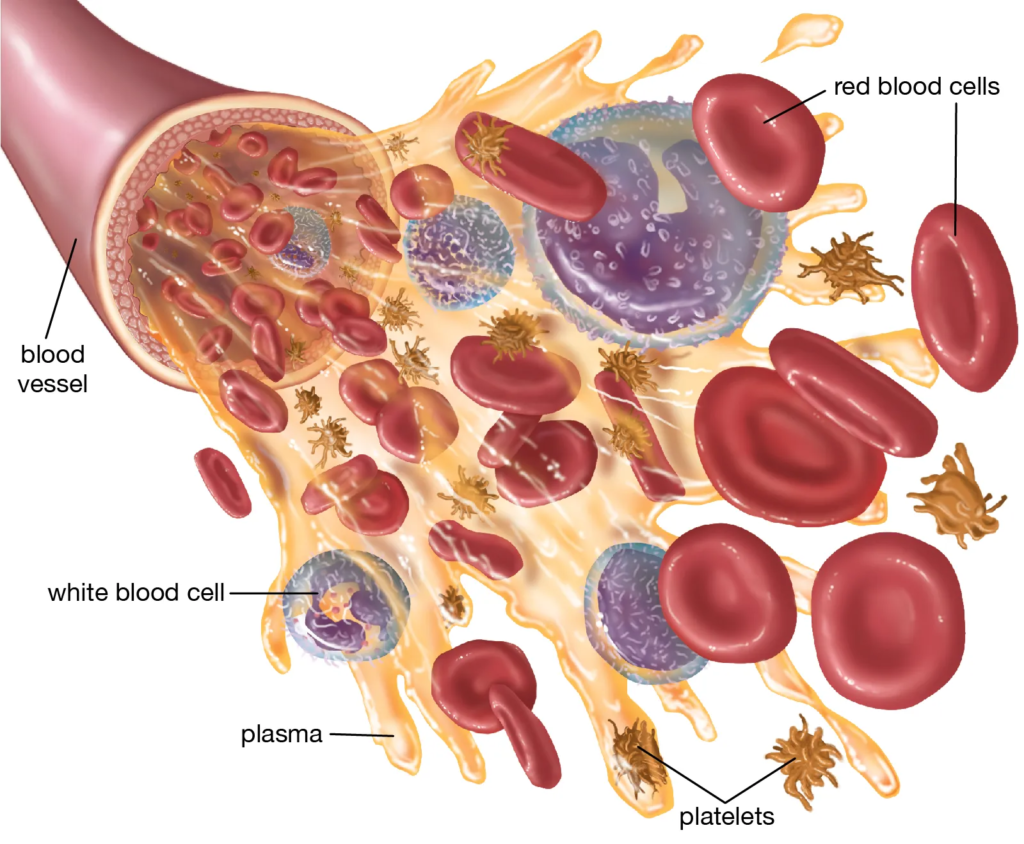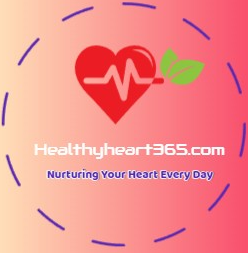Introduction
The cardiovascular system, often referred to as the circulatory system, is a vital network that supports life by ensuring the continuous flow of blood throughout the body. This intricate system is responsible for delivering oxygen and nutrients to cells, removing waste products, and maintaining homeostasis. In this blog, we will explore the anatomy, physiology, functions, and common disorders associated with the cardiovascular system.

Anatomy of the Cardiovascular System
Heart
At the center of the cardiovascular system is the heart, a muscular organ about the size of a fist, located slightly left of the center of the chest. The heart consists of four chambers:
- Atria: The upper chambers (right and left atria) receive blood returning to the heart.
- Ventricles: The lower chambers (right and left ventricles) pump blood away from the heart.
The heart is divided into two halves:
- Right Side: Receives deoxygenated blood from the body and pumps it to the lungs for oxygenation.
- Left Side: Receives oxygenated blood from the lungs and pumps it to the rest of the body.

Blood Vessels
The cardiovascular system comprises three main types of blood vessels:
- Arteries: Carry oxygen-rich blood away from the heart to the body (except for the pulmonary artery, which carries deoxygenated blood to the lungs).
- Veins: Return deoxygenated blood to the heart (except for the pulmonary veins, which carry oxygenated blood from the lungs).
- Capillaries: Microscopic vessels where the exchange of oxygen, carbon dioxide, nutrients, and waste occurs between blood and tissues.

Blood
Blood is a connective tissue that consists of:
- Red Blood Cells (RBCs): Carry oxygen from the lungs to the body and carbon dioxide back to the lungs.
- White Blood Cells (WBCs): Part of the immune system, helping to fight infections.
- Platelets: Assist in blood clotting.
- Plasma: The liquid component that carries cells, nutrients, hormones, and waste products.

Physiology of the Cardiovascular System
Cardiac Cycle
The cardiac cycle is the sequence of events that occurs during one heartbeat. It consists of two main phases:
- Diastole: The heart muscles relax, allowing the chambers to fill with blood.
- Systole: The heart muscles contract, pumping blood out of the chambers.
The cycle is regulated by electrical impulses generated by the sinoatrial (SA) node, the heart’s natural pacemaker. This electrical activity triggers contractions in a coordinated manner, ensuring efficient blood flow.
Blood Pressure
Blood pressure is the force exerted by circulating blood on the walls of blood vessels. It is measured in millimeters of mercury (mm Hg) and recorded as two values:
- Systolic Pressure: The pressure during ventricular contraction.
- Diastolic Pressure: The pressure during ventricular relaxation.
Normal blood pressure is typically around 120/80 mm Hg. Blood pressure can fluctuate based on various factors, including activity level, stress, and overall health.
Blood Flow Regulation
The cardiovascular system maintains homeostasis by regulating blood flow according to the body’s needs. Key mechanisms include:
- Autoregulation: Blood flow to tissues is adjusted based on metabolic needs.
- Neural Control: The autonomic nervous system (ANS) can influence heart rate and blood vessel diameter. The sympathetic nervous system increases heart rate and constricts blood vessels, while the parasympathetic nervous system decreases heart rate and dilates blood vessels.
- Hormonal Control: Hormones such as adrenaline can increase heart rate and blood pressure during stress.
Functions of the Cardiovascular System
The cardiovascular system serves several critical functions:
- Transportation: Delivers oxygen and nutrients to cells and removes carbon dioxide and waste products.
- Regulation: Maintains body temperature, pH levels, and fluid balance.
- Protection: Transports immune cells and antibodies to help defend against infections and injuries.
- Hormonal Distribution: Carries hormones from glands to target organs, facilitating communication and regulation of bodily functions.
Common Cardiovascular Disorders
Hypertension
Hypertension, or high blood pressure, is a condition in which the force of blood against the artery walls is consistently too high. It can lead to severe health problems, including heart disease and stroke. Risk factors include obesity, a sedentary lifestyle, poor diet, and genetics. Management often involves lifestyle changes and medication.
Atherosclerosis
Atherosclerosis is the buildup of fatty deposits (plaques) in the arteries, leading to narrowed or blocked vessels. This condition can restrict blood flow and result in serious complications such as heart attacks and strokes. Prevention focuses on a healthy diet, regular exercise, and avoiding smoking.
Coronary Artery Disease (CAD)
CAD occurs when the coronary arteries that supply blood to the heart become narrowed or blocked due to atherosclerosis. Symptoms may include chest pain (angina) and shortness of breath. Treatment options range from lifestyle modifications to medications and surgical interventions like angioplasty or bypass surgery.
Heart Failure
Heart failure is a chronic condition where the heart cannot pump blood effectively, leading to symptoms such as fatigue, shortness of breath, and fluid retention. Management includes medications, lifestyle changes, and in some cases, surgical procedures.
Arrhythmias
Arrhythmias are irregular heartbeats caused by disruptions in the heart’s electrical system. They can lead to palpitations, dizziness, or fainting. Treatment may involve lifestyle changes, medications, or procedures like catheter ablation.
Conclusion
The cardiovascular system is a complex and vital network that plays a crucial role in sustaining life. Understanding its anatomy, physiology, and functions is essential for recognizing the importance of cardiovascular health. As we navigate modern lifestyles that often include risk factors for cardiovascular disease, awareness and proactive management are key to promoting heart health. Regular check-ups, a balanced diet, exercise, and avoiding harmful habits can significantly contribute to a healthy cardiovascular system, allowing us to lead longer, healthier lives.
By prioritizing cardiovascular health, we can mitigate risks and enhance our overall well-being.
Read more blogs on healthyheart365.com








